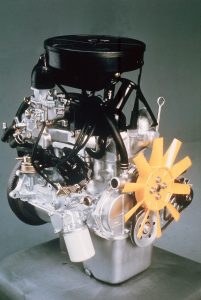THE LITTLE ENGINE THAT DID: FORD’S VENERABLE 1.6L ‘KENT’ INLINE FOUR

This tidy DeTomaso F3 racer also ran a humble Ford Kent engine, winning an Italian championship in the process
Most ardent Ford types can name every V-8 engine family the company ever produced; the Flathead, the Y-Block, the MEL (Mercury Edsel Lincoln), the FE, the original Fairlane Small-block, the 385 Big-block, 427 SOHC, the Mod motor, Coyote. But every four cylinder? Bet not.
From 1959 all the way to 2002, Ford produced and raced — all over the world — a little jewel of an I-4, wearing the family name “Kent” after Kent, England, because that’s where it was initially born and produced. Over time and those decades, it spanned between 39 and 111 factory rated horsepower – and that’s just the street production versions.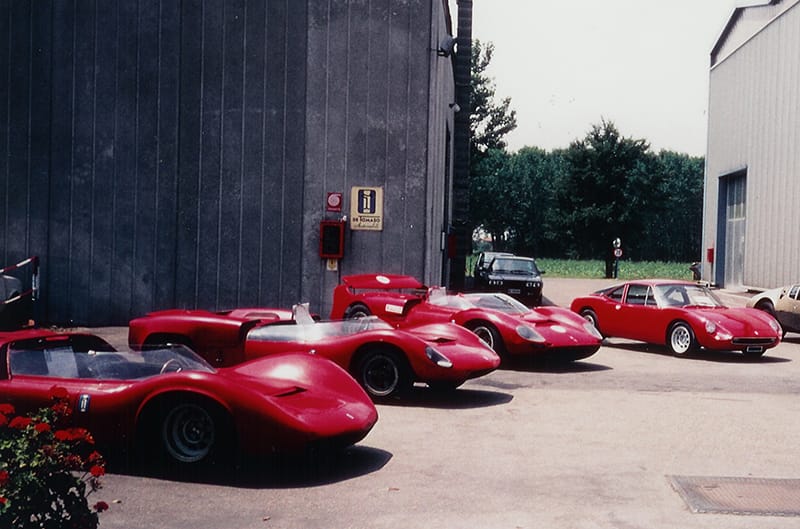
The Kent was developed in the late ’50s to replace a by-then somewhat varied and largely out-of-date lineup of I-4s. The brief was for an engine that was relatively compact and light and would power a variety of Ford models; it had to be sturdy, reliable and easy to produce. Its specs are basic, although appropriate for the time, being an overhead-valve, reverse-flow head (meaning that the intake manifold and the exhaust manifold were on the same side of the engine), and with cast-iron block and cylinder head. The Kent can be divided into three basic sub-families; the original pre-Crossflow (aka reverse flow) Kent, the Crossflow (the most prolific of all versions of the Kent), and the transverse-mounted Valencia variants. That first little Kent at 997cc (dubbed a 1.0-liter) produced just 39 horsepower, (to say nothing yet of Lotus and racing versions) and made its world production debut in the compact Ford Anglia in 1959.
As various Ford models and markets increased demand, and the need for more power for larger cars and trucks, the Kent went on an expansion program — soon the 1.0 became a 1.1, followed by 1.2, 1.3, 1.5-liter, and ultimately 1.6-liter variants. Power increased steadily with displacement. It wasn’t long before the new Kent became the mainstay of Ford four-cylinder production in England, Europe, and other world markets.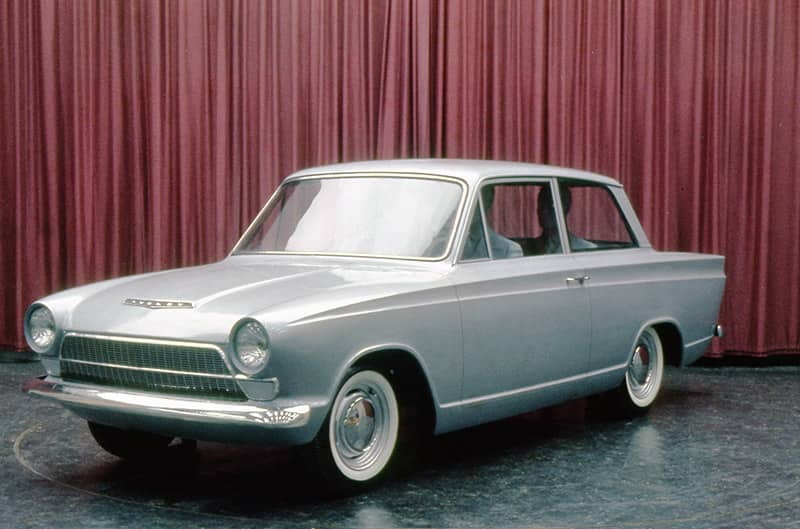
A lot happened for Ford’s tiny four in 1967 that would further set it on a trajectory as a world beater. First is that it received a major engineering redevelopment. Secondly it became the underpinning of a new open-wheel racing series that forever changed motorsport.
The main problem with the original reverse-flow intake/exhaust/head configuration is that it was inherently inefficient, in that mounting the intake manifold and carburetor just inches above the exhaust ports does little to promote maximum fuel density, since the exhaust system is always heating up the carburetor, fuel and intake manifold – and we all know that cooler air and cooler fuel makes more power, and reduces pre-ignition or “pinging.” The other efficiency killer of this layout is that the intake charge effectively has to make a U-turn in the engine to be exhausted out the same side of the engine in which it entered. The answer was to move one or the other (intake tract or exhaust) to the opposite side of the engine, so the intake tract could more efficiently travel across the engine, which engineers logically enough called “crossflow” design.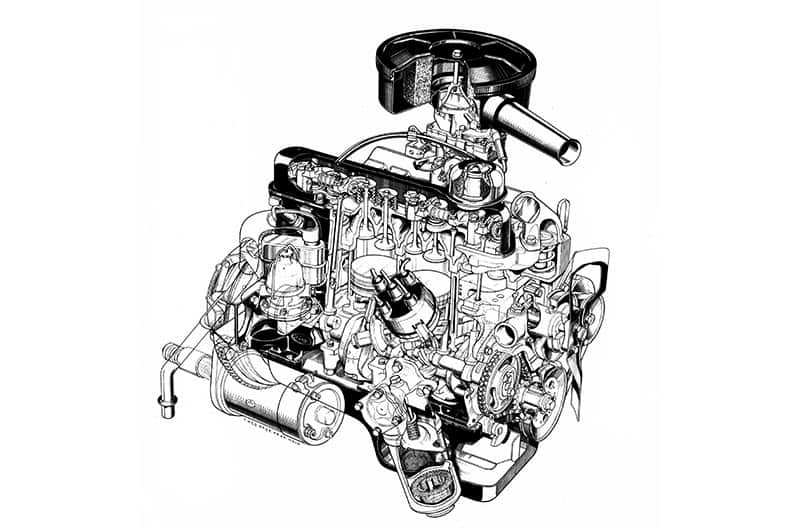
The new Crossflow Kent features a change in combustion chamber design, using a “Heron style” combustion chamber in the top of the piston rather than in the head. The head itself is flat with each engine capacity (1.1 and 1.3-liter (1,098 and 1,298cc, respectively) featuring different pistons with different-sized bowls in 681F and 701M blocks). The 1.6-liter (1,599cc) 691M block had the stronger “square” bearing caps later used in the 711M, and small combustion chambers in the near-flat head (the bulk of the volume being in the piston bowl). In 1970, the new A711 block for 1.3-liter (1,298cc) and A711M block for 1.6-liter (1,599cc) were introduced with thicker block wall, square main bearing caps, large diameter cam followers and wider cam lobes, with the latter block having a 7/16-inch taller deck height, together with a return to the flat head. These changes represented a significant improvement in the reliability of the engines, and the blocks are commonly referred to as “711M” blocks.
The Ford Crossflow engine (1.3-liter and 1.6-liter, 1,298 and 1,599cc) also powered the Reliant Anadol (1968-1984). Other makes such as Morgan, Caterham, and TVR used the Kent Crossflow on a variety of models. It has been fitted in countless other applications as well, being a favorite of kit-car builders. The earlier generation 1.0- and 1.2-liter variants were dropped.
It’s fair enough to say “give the Brits something new, and they’ll race it.” Such was the case for a new Formula of open-wheel racing series appropriately called Formula Ford, with its mandated spec engine being the 1600cc Crossflow Kent. It was conceived by Brands Hatch-based Motor Racing Stables, and the first race was held at that English circuit in July 1967. Formula Ford quickly took off, soon reaching mainland Europe, and the USA in 1969, and spreading as far afield as Brazil by 1971. It wasn’t long before Formula Ford was competing in many countries including England, Ireland, Scotland, Denmark, Finland, Sweden, Norway, Belgium, Holland, France, Switzerland, the USA, Canada, South Africa, Brazil and Australia.
In America it became a staple class in the Sports Car Club of America (SCCA) Regional and National Amateur ranks. Over time, Formula Ford has grown to be powered by more powerful and sophisticated Ford Duratec and Zetec engines, which is another story for another time. No matter, it wasn’t long before FF was seeding future ranks of Formula 1 champions. Over the years the careers of many Grand Prix greats have begun with Formula Ford: Ayrton Senna, Michael Schumacher, James Hunt, Emerson Fittipaldi, Jody Scheckter, Jensen Button, Damon Hill and Mika Hakkinen are among their number.
In virtually all street production models up to this time, the Kent was installed longitudinally, but by the early 1970s, new generations of front-wheel-drive cars (VW Rabbit/Golf, and myriad Fiat platforms) ran their engines transversely; and Ford needed the Kent to also serve this trend. So a new-gen Kent evolved, called Valencia. The Valencia was initially available in 1.0-liter (957cc) and 1.1-liter (1,117cc) version for European and other world markets.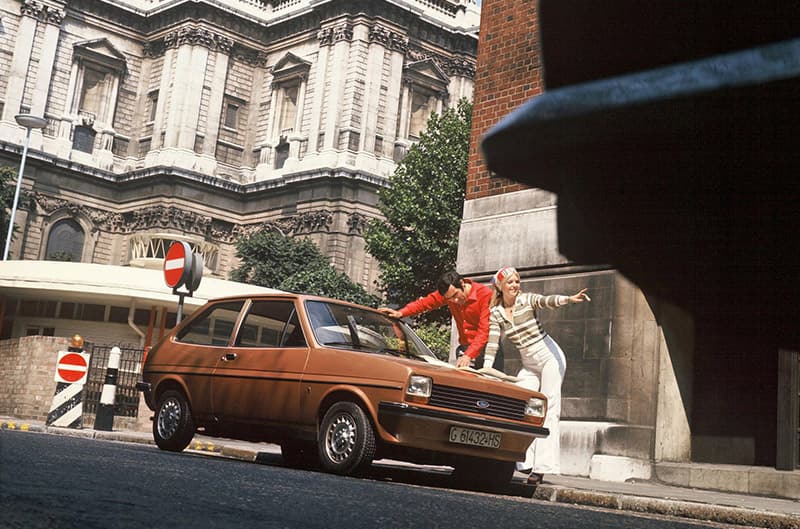
For adapting the Kent Crossflow for front-wheel drive, the ancillaries were repositioned, and the cylinder block shortened by 30mm (1.2 inches). This decision was taken in order for the engine to fit transversely across the new Ford Fiesta engine bay, whilst still allowing the transmission unit to be comfortably removed for clutch replacement. This difference however means that very few parts of the Valencia engine are interchangeable with a standard, longitudinal-spec Crossflow. However, Ford ended up installing the Crossflow engine into the Fiesta anyway, when the market demanded a 1.3-liter capacity, and later a 1.6-liter version for the North American market models.
Most Americans got their first taste of the Kent engine in Ford’s captive import the Cortina, and some in the 1600cc base version of the Mercury Capri. But it was mostly in the gracefully boxy first-generation Fiesta (designed by Ghia’s Tom Tjaarda, who also penned the deTomaso Pantera). That first Fiesta was an all-new, thoroughly modern 3-door hatchback which architecturally resembled cars like the first-generation 3-door VW Rabbit/Golf and also the Fiat 128SL. The engine proved zippy, robust and economical, and that original Fiesta was a blast to drive.
We mentioned that a variety of primarily British, low-volume producers powered their cars with Kent engines, not to mention countless homebuilt kit cars. Yet one other British street and racing car producer took the Kent engine to new levels of development, sophistication, power and success – that of course being Lotus.
Prior to 1962, Lotus cars ran a variety of engines (including standard Kents, Renaults, and others) successfully, yet production and racing car power demands called for more. The Lotus-Ford Twin Cam is a Kent-based I-4 developed by Lotus for the 1962 Lotus Elan. A few early examples displaced 1.5 liters, but the majority were 1.55-litre (1557cc) engines, dubbed a 1.6. It used a Ford 116E iron cylinder block and a new aluminum cylinder head with dual overhead camshafts. The Twin Cam was used in a variety of racing and production vehicles. You’ll also hear it referred to as the Lotus TwinCam and sometimes the Cosworth TA. The Ford based Twin-Cam was also seen as a worthy replacement for the all aluminum and outstanding Coventry Climax I-4, which was expensive and primarily a racing engine.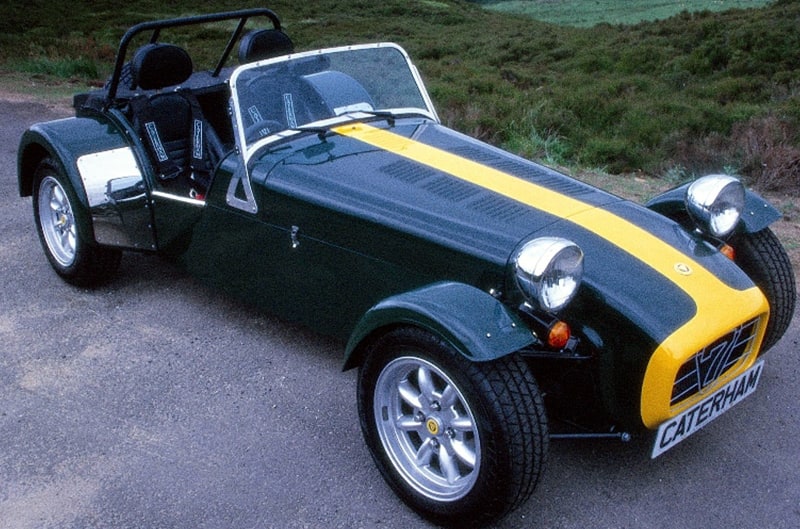
All notions of reverse-flow head and overhead valves were replaced with the aluminum double-overhead cam (DOHC) head that Lotus and a “greatest hits” list of current engine designers developed; the initial work was done by the somewhat legendary Harry Mundy, then Richard Ansdale produced detailed drawings of the new cylinder head. Lotus employee Steve Sanville headed the production engineering team that included Mike Costin (as in COSworth), Neil Francis and Bob Dance, and racing engine maestro Harry Weslake. Cosworth’s Keith DuckWORTH was also a player, hence the sometimes Cosworth reference to this motor. Chapman named the engine the “Lotus Twin-Cam” at its introduction in 1962 and Lotus continued to use that name. When production switched from the Cortina-Lotus to the Ford Cortina Mark II-based Cortina Twin Cam in 1967, Ford began to call the engine the “Lotus-Ford Twin Cam.” The engine is also known informally as the “Lotus TC” or the “Twink.”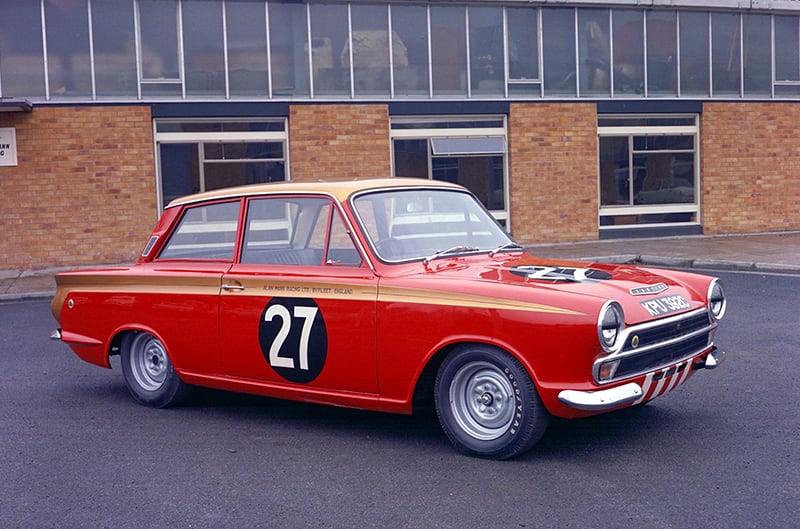
The result was startling; power outputs ran from 100-126 horsepower (certainly a long reach from the Kent’s original output of 39), with rpm and redline levels the OHV Kent could only dream of. The new Twin Cam became the mainstay of Lotus street production models, and handily proved itself on the race track. The European Cortina-Lotus also became a particularly successful touring car racer, driven by some of the greatest; including F1 champs Jimmy Clark, Graham Hill, and Jackie Stewart. The Lotus Twin Cam-powered RWD Escort was also a particularly successful rally racer.
Cosworth’s initial products were all Ford Kent based, and the later SCA, FVA and the BD series used Kent blocks to dominate many FIA categories, including Formula 2 and Formula 3. In addition, many respected racing engine builder/tuners, such as Holbay, Vegantune, Novamotor, Brian Hart, Richardson and Wilcox, owe their foundations to the Ford Kent-based engines. In Europe, Formula Ford switched to the Zetec, but American Formula Ford continued to be Kent-powered until 2010; the SCCA having approved the use of a – go figure – Honda L15A i-VTEC for what has since been renamed Formula F.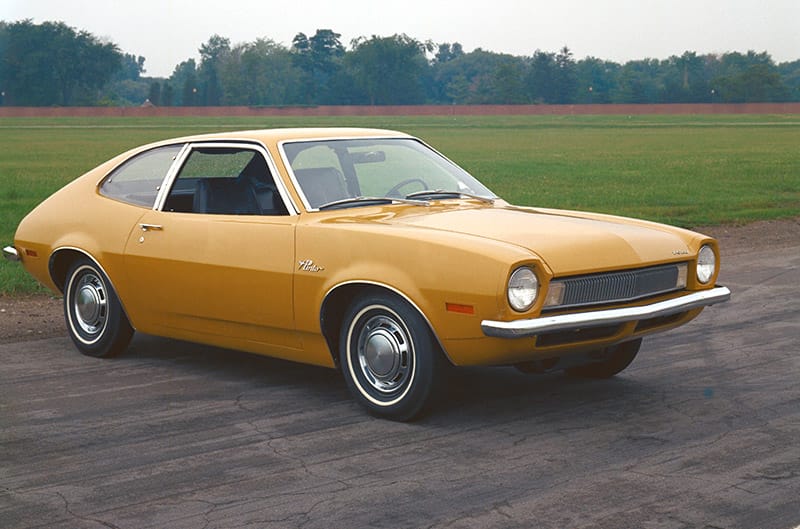
As time went along, Ford continued to modernize the hearty Kent for road car production; it ultimately got electronic ignition, and fuel injection to help keep it relevant as a street car powerplant. The final version was called the Endura-E, which was produced from 1995 until 2002. Over its 43-year production life, countless tens of thousands of Kent engines were manufactured. Lest we forget that the Kent 1600 was, for a time, also the base engine offering in the new for 1971 Ford Pinto.
And in a sense, you can still get one — or at least the heart of one — from Ford Performance. Believe it or not, Ford Performance still produces a strengthened, and mildly updated Kent I-4 engine block, perfect for your vintage Formula Ford racer or, Kent-powered hot rod, of which there are more than a few out there. This special block has been structurally fortified for greater durability, although it’s not modified in any way that would greatly increase output or performance, since Formula Ford is a production-based racing series, and to develop a later, high-output racing version of it would be counter to the rules. It’s part number M-6010-16K, runs $1,825, and it and its attendant Ford Racing valve cover can be found here: https://performanceparts.ford.com/part/M-6010-16K
FORD PERFORMANCE PHOTOS / COURTESY FORD ARCHIVES

Most ardent Ford types can name every V-8 engine family the company ever produced; the Flathead, the Y-Block, the MEL (Mercury Edsel Lincoln), the FE, the original Fairlane Small-block, the 385 Big-block, 427 SOHC, the Mod motor, Coyote. But every four cylinder? Bet not.
From 1959 all the way to 2002, Ford produced and raced — all over the world — a little jewel of an I-4, wearing the family name “Kent” after Kent, England, because that’s where it was initially born and produced. Over time and those decades, it spanned between 39 and 111 factory rated horsepower – and that’s just the street production versions.
The Kent was developed in the late ’50s to replace a by-then somewhat varied and largely out-of-date lineup of I-4s. The brief was for an engine that was relatively compact and light and would power a variety of Ford models; it had to be sturdy, reliable and easy to produce. Its specs are basic, although appropriate for the time, being an overhead-valve, reverse-flow head (meaning that the intake manifold and the exhaust manifold were on the same side of the engine), and with cast-iron block and cylinder head. The Kent can be divided into three basic sub-families; the original pre-Crossflow (aka reverse flow) Kent, the Crossflow (the most prolific of all versions of the Kent), and the transverse-mounted Valencia variants. That first little Kent at 997cc (dubbed a 1.0-liter) produced just 39 horsepower, (to say nothing yet of Lotus and racing versions) and made its world production debut in the compact Ford Anglia in 1959.
As various Ford models and markets increased demand, and the need for more power for larger cars and trucks, the Kent went on an expansion program — soon the 1.0 became a 1.1, followed by 1.2, 1.3, 1.5-liter, and ultimately 1.6-liter variants. Power increased steadily with displacement. It wasn’t long before the new Kent became the mainstay of Ford four-cylinder production in England, Europe, and other world markets.
A lot happened for Ford’s tiny four in 1967 that would further set it on a trajectory as a world beater. First is that it received a major engineering redevelopment. Secondly it became the underpinning of a new open-wheel racing series that forever changed motorsport.
The main problem with the original reverse-flow intake/exhaust/head configuration is that it was inherently inefficient, in that mounting the intake manifold and carburetor just inches above the exhaust ports does little to promote maximum fuel density, since the exhaust system is always heating up the carburetor, fuel and intake manifold – and we all know that cooler air and cooler fuel makes more power, and reduces pre-ignition or “pinging.” The other efficiency killer of this layout is that the intake charge effectively has to make a U-turn in the engine to be exhausted out the same side of the engine in which it entered. The answer was to move one or the other (intake tract or exhaust) to the opposite side of the engine, so the intake tract could more efficiently travel across the engine, which engineers logically enough called “crossflow” design.
The new Crossflow Kent features a change in combustion chamber design, using a “Heron style” combustion chamber in the top of the piston rather than in the head. The head itself is flat with each engine capacity (1.1 and 1.3-liter (1,098 and 1,298cc, respectively) featuring different pistons with different-sized bowls in 681F and 701M blocks). The 1.6-liter (1,599cc) 691M block had the stronger “square” bearing caps later used in the 711M, and small combustion chambers in the near-flat head (the bulk of the volume being in the piston bowl). In 1970, the new A711 block for 1.3-liter (1,298cc) and A711M block for 1.6-liter (1,599cc) were introduced with thicker block wall, square main bearing caps, large diameter cam followers and wider cam lobes, with the latter block having a 7/16-inch taller deck height, together with a return to the flat head. These changes represented a significant improvement in the reliability of the engines, and the blocks are commonly referred to as “711M” blocks.
The Ford Crossflow engine (1.3-liter and 1.6-liter, 1,298 and 1,599cc) also powered the Reliant Anadol (1968-1984). Other makes such as Morgan, Caterham, and TVR used the Kent Crossflow on a variety of models. It has been fitted in countless other applications as well, being a favorite of kit-car builders. The earlier generation 1.0- and 1.2-liter variants were dropped.
It’s fair enough to say “give the Brits something new, and they’ll race it.” Such was the case for a new Formula of open-wheel racing series appropriately called Formula Ford, with its mandated spec engine being the 1600cc Crossflow Kent. It was conceived by Brands Hatch-based Motor Racing Stables, and the first race was held at that English circuit in July 1967. Formula Ford quickly took off, soon reaching mainland Europe, and the USA in 1969, and spreading as far afield as Brazil by 1971. It wasn’t long before Formula Ford was competing in many countries including England, Ireland, Scotland, Denmark, Finland, Sweden, Norway, Belgium, Holland, France, Switzerland, the USA, Canada, South Africa, Brazil and Australia.
In America it became a staple class in the Sports Car Club of America (SCCA) Regional and National Amateur ranks. Over time, Formula Ford has grown to be powered by more powerful and sophisticated Ford Duratec and Zetec engines, which is another story for another time. No matter, it wasn’t long before FF was seeding future ranks of Formula 1 champions. Over the years the careers of many Grand Prix greats have begun with Formula Ford: Ayrton Senna, Michael Schumacher, James Hunt, Emerson Fittipaldi, Jody Scheckter, Jensen Button, Damon Hill and Mika Hakkinen are among their number.
In virtually all street production models up to this time, the Kent was installed longitudinally, but by the early 1970s, new generations of front-wheel-drive cars (VW Rabbit/Golf, and myriad Fiat platforms) ran their engines transversely; and Ford needed the Kent to also serve this trend. So a new-gen Kent evolved, called Valencia. The Valencia was initially available in 1.0-liter (957cc) and 1.1-liter (1,117cc) version for European and other world markets.
For adapting the Kent Crossflow for front-wheel drive, the ancillaries were repositioned, and the cylinder block shortened by 30mm (1.2 inches). This decision was taken in order for the engine to fit transversely across the new Ford Fiesta engine bay, whilst still allowing the transmission unit to be comfortably removed for clutch replacement. This difference however means that very few parts of the Valencia engine are interchangeable with a standard, longitudinal-spec Crossflow. However, Ford ended up installing the Crossflow engine into the Fiesta anyway, when the market demanded a 1.3-liter capacity, and later a 1.6-liter version for the North American market models.
Most Americans got their first taste of the Kent engine in Ford’s captive import the Cortina, and some in the 1600cc base version of the Mercury Capri. But it was mostly in the gracefully boxy first-generation Fiesta (designed by Ghia’s Tom Tjaarda, who also penned the deTomaso Pantera). That first Fiesta was an all-new, thoroughly modern 3-door hatchback which architecturally resembled cars like the first-generation 3-door VW Rabbit/Golf and also the Fiat 128SL. The engine proved zippy, robust and economical, and that original Fiesta was a blast to drive.
We mentioned that a variety of primarily British, low-volume producers powered their cars with Kent engines, not to mention countless homebuilt kit cars. Yet one other British street and racing car producer took the Kent engine to new levels of development, sophistication, power and success – that of course being Lotus.
Prior to 1962, Lotus cars ran a variety of engines (including standard Kents, Renaults, and others) successfully, yet production and racing car power demands called for more. The Lotus-Ford Twin Cam is a Kent-based I-4 developed by Lotus for the 1962 Lotus Elan. A few early examples displaced 1.5 liters, but the majority were 1.55-litre (1557cc) engines, dubbed a 1.6. It used a Ford 116E iron cylinder block and a new aluminum cylinder head with dual overhead camshafts. The Twin Cam was used in a variety of racing and production vehicles. You’ll also hear it referred to as the Lotus TwinCam and sometimes the Cosworth TA. The Ford based Twin-Cam was also seen as a worthy replacement for the all aluminum and outstanding Coventry Climax I-4, which was expensive and primarily a racing engine.
All notions of reverse-flow head and overhead valves were replaced with the aluminum double-overhead cam (DOHC) head that Lotus and a “greatest hits” list of current engine designers developed; the initial work was done by the somewhat legendary Harry Mundy, then Richard Ansdale produced detailed drawings of the new cylinder head. Lotus employee Steve Sanville headed the production engineering team that included Mike Costin (as in COSworth), Neil Francis and Bob Dance, and racing engine maestro Harry Weslake. Cosworth’s Keith DuckWORTH was also a player, hence the sometimes Cosworth reference to this motor. Chapman named the engine the “Lotus Twin-Cam” at its introduction in 1962 and Lotus continued to use that name. When production switched from the Cortina-Lotus to the Ford Cortina Mark II-based Cortina Twin Cam in 1967, Ford began to call the engine the “Lotus-Ford Twin Cam.” The engine is also known informally as the “Lotus TC” or the “Twink.”
The result was startling; power outputs ran from 100-126 horsepower (certainly a long reach from the Kent’s original output of 39), with rpm and redline levels the OHV Kent could only dream of. The new Twin Cam became the mainstay of Lotus street production models, and handily proved itself on the race track. The European Cortina-Lotus also became a particularly successful touring car racer, driven by some of the greatest; including F1 champs Jimmy Clark, Graham Hill, and Jackie Stewart. The Lotus Twin Cam-powered RWD Escort was also a particularly successful rally racer.
Cosworth’s initial products were all Ford Kent based, and the later SCA, FVA and the BD series used Kent blocks to dominate many FIA categories, including Formula 2 and Formula 3. In addition, many respected racing engine builder/tuners, such as Holbay, Vegantune, Novamotor, Brian Hart, Richardson and Wilcox, owe their foundations to the Ford Kent-based engines. In Europe, Formula Ford switched to the Zetec, but American Formula Ford continued to be Kent-powered until 2010; the SCCA having approved the use of a – go figure – Honda L15A i-VTEC for what has since been renamed Formula F.
As time went along, Ford continued to modernize the hearty Kent for road car production; it ultimately got electronic ignition, and fuel injection to help keep it relevant as a street car powerplant. The final version was called the Endura-E, which was produced from 1995 until 2002. Over its 43-year production life, countless tens of thousands of Kent engines were manufactured. Lest we forget that the Kent 1600 was, for a time, also the base engine offering in the new for 1971 Ford Pinto.
And in a sense, you can still get one — or at least the heart of one — from Ford Performance. Believe it or not, Ford Performance still produces a strengthened, and mildly updated Kent I-4 engine block, perfect for your vintage Formula Ford racer or, Kent-powered hot rod, of which there are more than a few out there. This special block has been structurally fortified for greater durability, although it’s not modified in any way that would greatly increase output or performance, since Formula Ford is a production-based racing series, and to develop a later, high-output racing version of it would be counter to the rules. It’s part number M-6010-16K, runs $1,825, and it and its attendant Ford Racing valve cover can be found here: https://performanceparts.ford.com/part/M-6010-16K
PHOTOS / COURTESY FORD ARCHIVES, and by me



